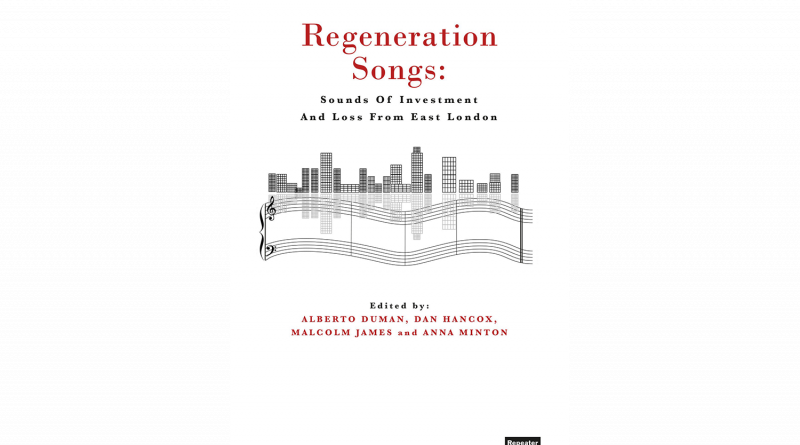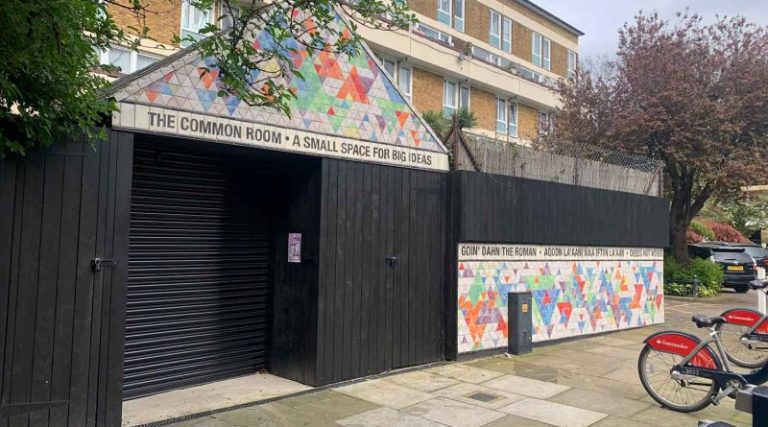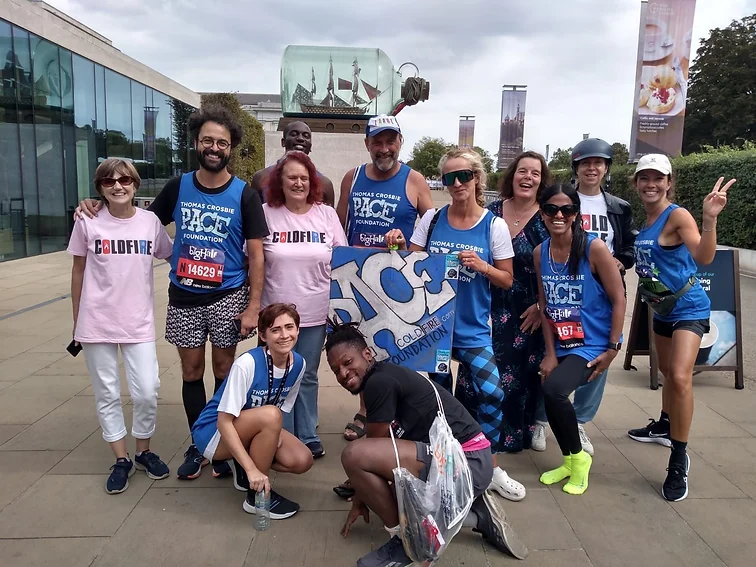Regeneration Songs: Sounds of Investment and Loss in East London, Book review
A scorching collection of essays, Regeneration Songs is crucial reading for anyone seeking to understand their changing city.
Moving through certain parts of East London can feel like navigating a film set. The graffiti still stands, as do the facades of factories and warehouses, but increasingly the place rings empty, like a forest of hollowed-out trees.
As old communities are displaced and new residents settle in, regenerated areas visually resemble the places they once were. But, more often than not, their character has altered beyond recognition.
A scorching collection of essays, Regeneration Songs explores this unsettling phenomenon, offering insight into the monumental impact of global capital and foreign investment on the development of East London.
The book charts the complex history of regeneration that comes to a head in the 2010s with the arrival of the London Olympics. The 1970s and ’80s are marked out as a pivotal moment in the story, when Newham and the surrounding area was first positioned by the local council as an ‘arc of opportunity’ for foreign investors.
For the last thirty years, the public sector used this glossy narrative of ‘opportunity’ and ‘potential’ to attract private developers, prioritising profit over the needs of long-standing residents and communities.
Regeneration Songs offers a comprehensive range of perspectives on the neoliberal ‘placemaking’ drive. At base, these so-called placemaking strategies aim to drive up land value. Bruce Katz, an American ‘global urbanisation’ expert, describes this as the process of ‘extracting value’ from land through ‘increasing commercial yield’.
In an unsettlingly anodyne turn of phrase, Katz acknowledges that these strategies ‘typically see tenant replacement’, as communities are torn apart and social housing is demolished to give way to luxury flats.
Upon eviction, writes Anna Minton, displaced council tenants are often promised ‘affordable housing’ that never materialises. Minton, one of the book’s editors, draws attention to the fact that the government definition of ‘affordable’ is property that costs up to 80 per cent of the market value. In this context, writes Minton, ‘most people cannot afford to live in London’s new “affordable homes.”’
Contributing writers work across a range of forms, from classic essays to interview transcripts to fragmented “dream works” composed of quotes, notes and diary entries. Poems and interludes break up the text, along with photographs and reproductions of corporate marketing bumf. Emerging from this kaleidoscopic collection is a thorough history of regeneration and loss in the East End.
Filmmaker Tom Cordell tackles the colonial history of the Docklands; writer Anna Minton gives a broad overview of thirty years of regeneration; architect Theodora Bowering explores the way ageing populations access public space, while Guardian journalist Dan Hancox charts the emergence of the grime scene in East London.
The book abounds with disturbing detail. Jane Rendell writes that in 2014, the property consultants Savills advised Southwark Council to ‘“unearth the potential” of public land, including “brownfield sites”, a term that for them includes fully occupied housing estates’.
There are other disconcerting facts. The Olympic Park was built on a marsh which, historically, was common land, belonging to all people. With the arrival of the Olympics, these common rights were ‘steam-rollered over.’
Despite the criticism, the central argument of the book holds that regeneration in itself is not a bad thing. In the postwar period, East London did need significant investment: Tom Cordell remembers when the docklands were simply ‘mile after mile of flat dereliction’, while Hancox quotes Jammz, an MC from Hackney Wick, who remembers the Stratford area as a ‘big patch of nothingness.’
The general thrust of the argument is that driven by profit, regeneration has gone awry, serving corporate interests instead of the needs of local people.
It is clear that market-driven regeneration is not the only option. Sue Brownill details the People’s Plan of the 1980s, which offered an alternative strategy based on the principles of public ownership of land and community participation in urban planning.
Today, other organisations are working to provide alternatives to corporate ‘placemaking’. Concrete Action is a collective of journalists, researchers and architects aiming to ‘reclaim regeneration,’ fighting for social housing and public land in London. As David Cross writes, ‘it is still possible to resist the symbolic and actual dominance of the public and commons by private capital.’
While generally sturdy, the production values of the book leave something to be desired. Gillian Swan’s poem, printed over two pages, is swallowed into the gutter of the book, while the grainy black-and-white images would do better printed in full colour. These are nevertheless minor concerns that do little to dent the power of the text itself.
Over 450 pages long, Regeneration Songs might feel intimidating if the writing was not so fluid, the themes so varied, the contributions so formally diverse. This is a book to return to again and again, an invaluable guide for those moving through East London, trying to make sense of the city as it changes around them.
If you enjoyed this, take a look at our review of ‘Grime Kids’ – the inside story of a creative revolution.








